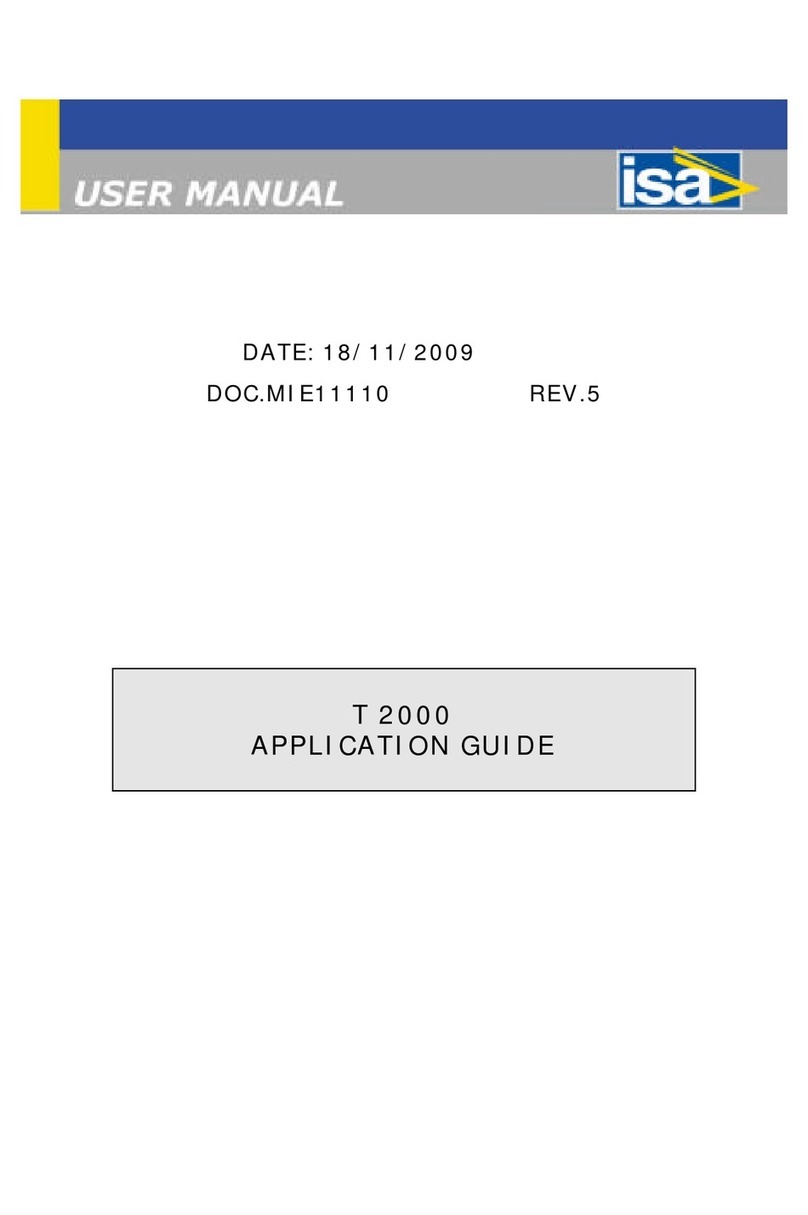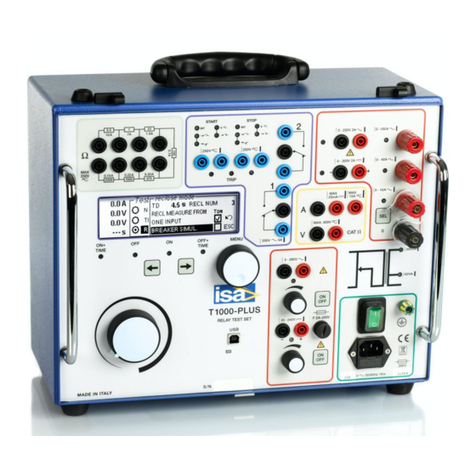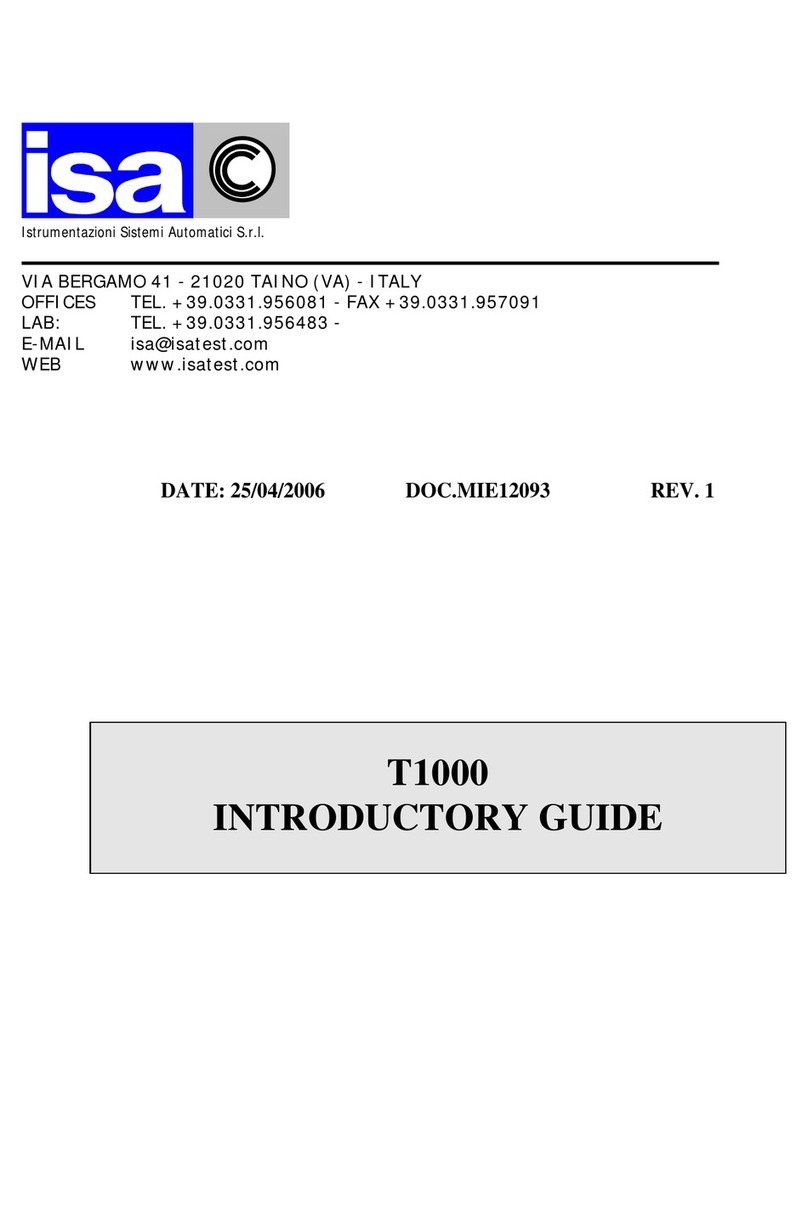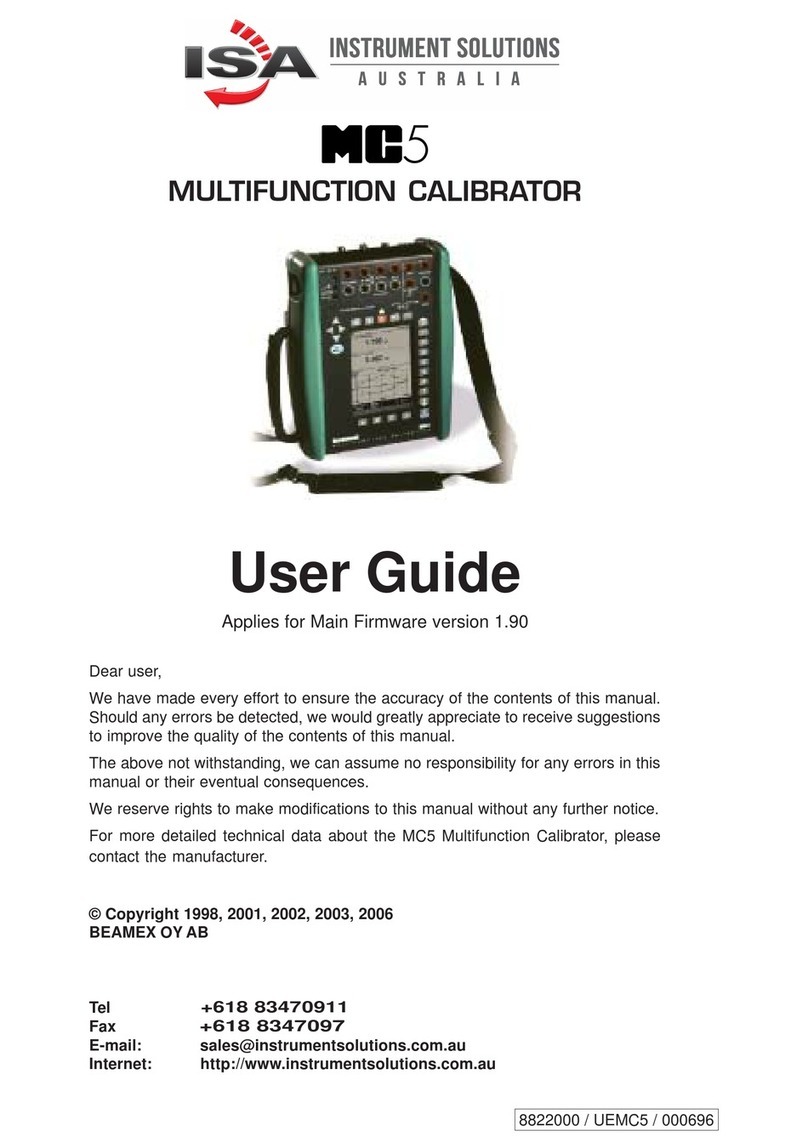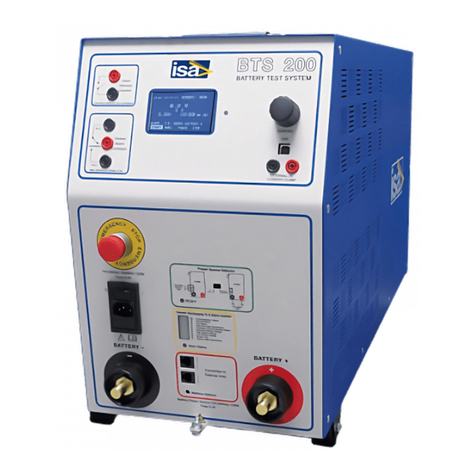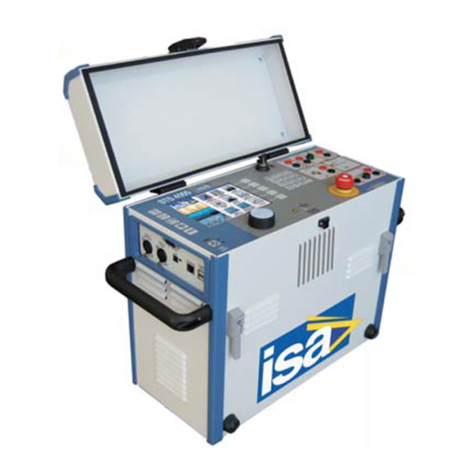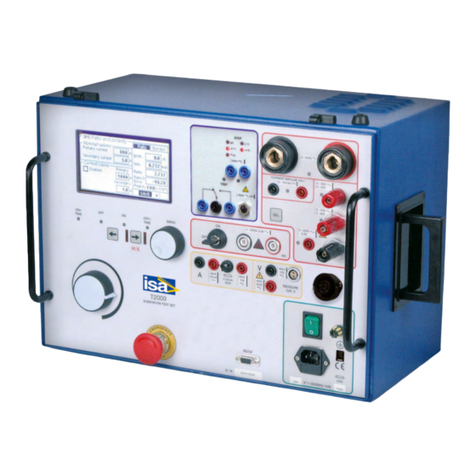
DOC. MIE92093 Rev. 1.34 Page 3 of 108
SHORT FOREWORD ......................................................................................5
INTRODUCTION .............................................................................................6
1 TEST SET EXPLANATION ......................................................................9
1.1 CONNECTION TO THE RELAY AND POWER-ON...........................................9
1.2 TEST CONTROL..........................................................................................10
1.3 CURRENT GENERATION.............................................................................14
1.4 AC VOLTAGE GENERATION FROM MAIN OUTPUT.....................................18
1.5 DC VOLTAGE GENERATION FROM MAIN OUTPUT ....................................18
1.6 AC VOLTAGE GENERATION FROM THE AUXILIARY OUTPUT.....................19
1.7 DC VOLTAGE GENERATION FROM THE AUXILIARY OUTPUT ....................23
1.8 AUXILIARY CONTACTS ..............................................................................24
1.9 THE TIMER.................................................................................................24
1.10 FINDING RELAY THRESHOLDS................................................................26
1.10.1. Introduction ........................................................................26
1.10.2. First threshold trip and drop-off...............................27
1.10.3. Second threshold trip and drop-off.........................28
1.11 FINDING RELAY TIMINGS .......................................................................28
1.12 TEST RESULTS HANDLING......................................................................30
1.13 BASIC TEST PRINCIPLES ........................................................................32
1.13.1. Introduction..........................................................................32
1.13.2. Parameter vs. time characteristic ...........................33
1.13.3. Parameter vs. parameter characteristic ..............34
1.14 USE OF THE TEST SET AS A MULTIMETER .............................................37
1.15 TD1000 MODEL:AC CURRENT GENERATION FROM THE AUXILIARY
OUTPUT..............................................................................................................39
1.16 FILTERING HEAVY BURDEN DISTORTION WITH THE FT1000 OPTION40
2 TEST SET AND POP-UP MENU..........................................................42
2.1 THE FRONT PANEL.....................................................................................42
2.2 DISPLAY AND CONTROL LIGHTS...............................................................44
2.3 THE POP-UP MENU ....................................................................................45
3 WHAT’S INSIDE? ....................................................................................61
3.1 PHYSICAL DESCRIPTION ...........................................................................61
3.2 DETAILED FUNCTION DESCRIPTION.........................................................65
3.2.1 Main auxiliary transformer, XTF10330 (3).............65
3.2.2 Auxiliary transformer, XTF10245 (4) ........................66
3.2.3 Main output transformer, XTF10345 (5) .................68
3.2.4 Main front board PWA11398 (17)................................68
3.2.5 MISU T1000 board PWA11402 (26) ...........................68












